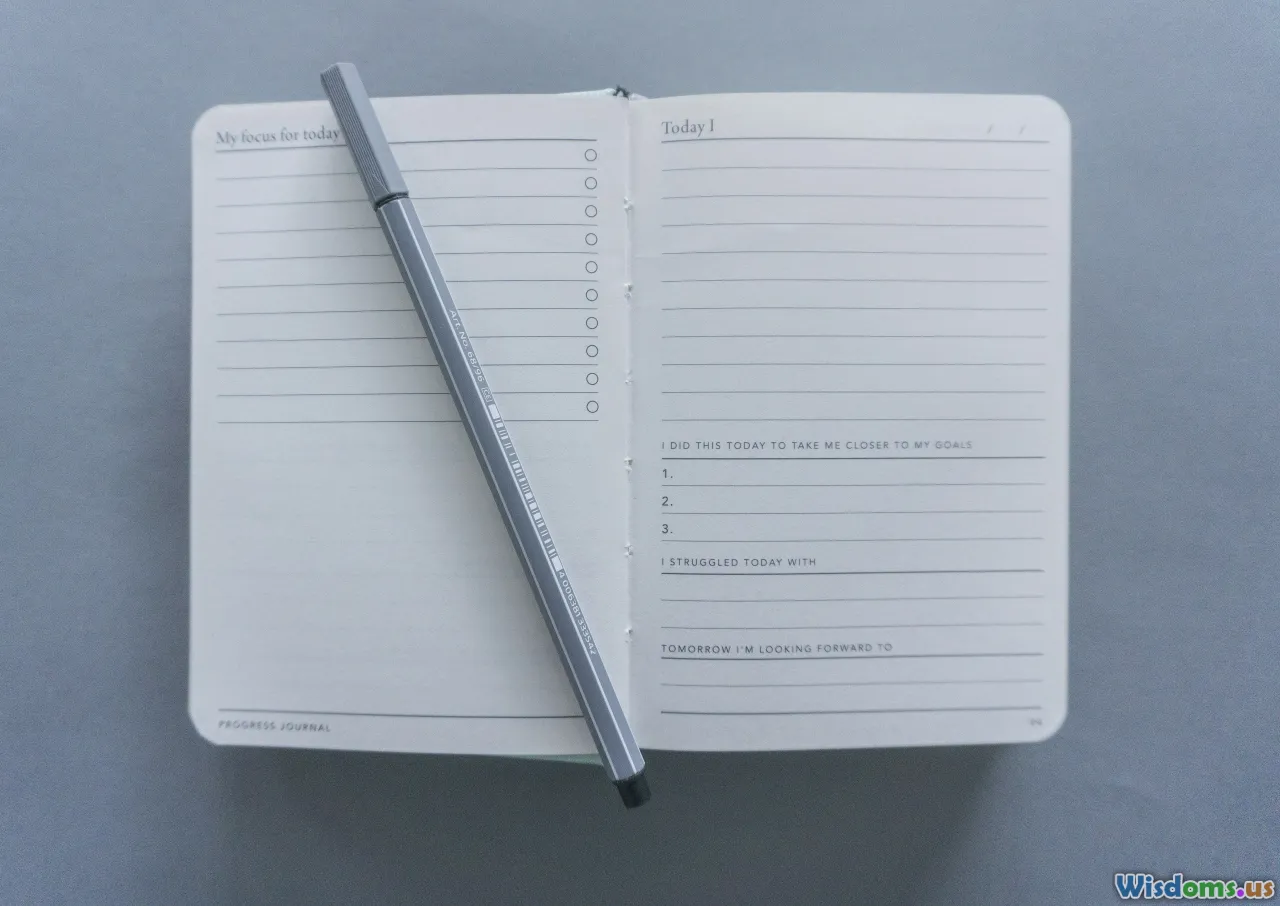
A Guide to Healing Family Conflicts with Loving Kindness Techniques
33 min read Practical, research-backed steps to resolve family conflicts using loving kindness techniques, including scripts, rituals, and boundaries that rebuild trust, reduce reactivity, and create compassionate, lasting connection at home. (0 Reviews)
Family conflict can erupt over the tiniest spark—a forgotten chore, a tense holiday, a throwaway comment that lands like a stone. Maybe you’ve felt the emotional whiplash: one minute you love these people, the next you’re rehearsing a speech in the shower about everything they don’t understand. Loving kindness isn’t a magic wand, but it is a practical, trainable skill that shifts how you hold the people you care about at their worst moments. It helps you change the emotional climate so that hard conversations can become healing ones.
This guide blends evidence-based insights, real-world scripts, and simple practices you can begin today. Think of it as a toolkit for engaging with family in a way that is strong, warm, and sustainable.
What Loving Kindness Is—and Why It Heals Families

Loving kindness (often called metta) is the intentional cultivation of goodwill toward yourself and others. It is not agreement, forgiveness, or letting anyone off the hook. Instead, it’s the inner posture of wishing well-being for all parties—including yourself—while you address what’s difficult.
What it is in practice:
- A mental rehearsal of care: silently repeating phrases like “May I be steady,” “May you be safe,” “May we meet this wisely.”
- A physiological reset: breathing and attention practices that soothe reactivity so you can respond, not react.
- A communication orientation: speaking in ways that reduce defensiveness and invite collaboration.
Why it helps:
- It interrupts the threat cycle. When we feel attacked, the brain’s survival systems take the wheel. Loving kindness practices increase parasympathetic activity (the “rest and digest” response), which eases fight-flight-freeze reactions so the thinking part of the brain can re-engage.
- It broadens perspective. Research associated with positive psychology, including work by Barbara Fredrickson, has shown that inducing warm, prosocial emotions can widen our attention and improve problem-solving and social connection over time.
- It strengthens relational bonds. Studies on loving-kindness and compassion training suggest small-to-moderate improvements in empathy, social connectedness, and reduction in bias. In families, this translates to fewer cycles of escalation and more micro-moments of repair.
What it does not do:
- It doesn’t promise instant harmony. It builds capacity and changes patterns gradually.
- It doesn’t replace boundaries or accountability. Loving kindness supports clear limits; it doesn’t erase them.
- It isn’t spiritual cosplay. You can practice it from any religious, cultural, or secular perspective.
A simple mental model: picture loving kindness as the emotional climate control in a room. The conversation is the furniture; the climate determines whether anyone wants to sit down.
A Four-Phase Loving Kindness Protocol for Family Conflicts

Use this structured flow when tension rises or before a known hard conversation.
Phase 1: Prepare your nervous system (2–5 minutes)
- Posture: Sit or stand with both feet on the ground. Drop your shoulders. Let your jaw unclench.
- Breath: Inhale for a count of 4, exhale for a count of 6, for one minute. Longer exhales nudge the body toward calm.
- Touch anchor: Lightly press two fingers together or place a hand on your chest. This creates a cue you can reuse during tough moments.
- Intention: Choose one short phrase, said mentally: “May I be steady.” “May I respond wisely.” “I can be firm and kind.”
Phase 2: Practice loving kindness (3–7 minutes)
- For self: “May I be safe. May I be strong. May I meet this with clarity and care.” Notice any softening or resistance without forcing it.
- For the other person: Bring them to mind. Imagine their face, their breathing. “May you be safe. May you be at ease. May you feel understood.” If that’s too hard, try: “As best I can today, may I see your humanity.”
- For the relationship: “May we handle this wisely. May we find a path that honors everyone’s dignity.”
Phase 3: Communicate with warmth and spine
- Warmth: Start with one sentence that acknowledges the other person’s perspective or effort: “I know this matters to you.”
- Spine: State your boundary or need clearly: “I’m not okay with yelling. I will step out if it starts.”
- Collaborative frame: Offer a next step: “Can we agree to a five-minute pause if either of us needs it?”
- Use present tense and specifics. Avoid past-dredging.
Phase 4: Consolidate
- After the talk, jot down three bullets: what went better, what you’d change, one appreciation for the other person (even if small).
- Repeat two loving-kindness phrases to close the loop for your nervous system.
Run-through example:
- You anticipate a disagreement about money. You spend five minutes breathing, then send goodwill toward yourself and your sibling. In the conversation, you start with, “I know you’ve carried a lot of the logistics,” follow with, “I need us to track expenses in writing,” and propose, “Let’s use a shared spreadsheet and check in Sundays for 10 minutes.” Afterward, you note that your voice stayed even and that naming the win (“you’ve carried a lot”) lowered defensiveness.
Scripts: Words to Use When Emotions Run High

When you’re dysregulated, finding words is half the struggle. Here are scripts you can adapt in minutes.
Self-soothing whispers (silently or quietly):
- “I can be steady even if this is bumpy.”
- “Breath in, long breath out. I’m safe enough to stay regulated.”
- “Kind and clear. Kind and clear.”
Opening a hard talk:
- “I want this conversation to help us, not hurt us. Can we try a slower pace and take pauses if needed?”
- “I may be wrong about parts of this. I want to understand your view before I respond.”
De-escalation mid-conflict:
- “I’m getting too heated. I need a five-minute break; I promise to come back.”
- “I hear that you feel dismissed. That makes sense given what you’ve been carrying.”
Boundary with care:
- “I love you and I won’t continue this if voices are raised. Let’s try again when we’re calmer.”
- “I’m happy to discuss the plan. I’m not available for insults.”
Repair after a rupture:
- “I didn’t like how I spoke earlier. I’m sorry for my tone. Here’s what I was trying to say without the heat.”
- “Thank you for sticking with that hard topic. I felt closer to you when we switched to solutions.”
Text-message adaptation (when in-person is too volatile):
- “I want to get this right. Could we both write what we need in 3 bullets, then react tomorrow?”
- “I’m taking a pause to avoid saying something unhelpful. I’ll circle back by 7 pm.”
Group setting reset:
- “We’re all a bit on edge. Can we have two minutes to breathe, then take turns with two-minute timers?”
Two-way curiosity prompt:
- “Would you share the top concern under your position? I’ll try to mirror it back before I respond.”
Applying LKM to Common Family Flashpoints

Holiday politics at the dinner table
- Loving kindness set-up: In the car or bathroom, repeat, “May we be safe. May this table hold respect.”
- Ground rules script: “Let’s agree to no personal attacks. If things get tense, we shift to questions or take a pause.”
- Boundaries: “I’m not discussing that tonight.” Offer a redirection: “Tell me about your latest project.”
- Micro-win: Notice and name one moment of connection (“I loved your story about Grandpa’s garden”).
Money and inheritance disagreements
- Loving kindness set-up: “May we treat resources and relationships with care.”
- Clarity move: Put numbers in writing. Ambiguity breeds conflict. Share a single-page summary everyone can see.
- Slow down: “Let’s separate what’s fair from what’s legally required, and look at both.”
- Option generation: Name three workable options before debating any. It forces thinking beyond either/or.
Caregiving stress for an aging parent
- Loving kindness set-up: “May we be steady for Mom. May we be kind to ourselves.”
- Acknowledgment: “We’re all tired and scared. That’s normal.”
- Energy audit: List the top three draining tasks and match to strengths. One sibling handles logistics; another handles companionship; rotate the night shifts.
- Outside help: Loving kindness includes getting respite. Contact a care manager, adult day program, or rotate weekends off.
Co-parenting after divorce
- Loving kindness set-up: “May our child feel secure across both homes.”
- Communication hygiene: Use a co-parenting app and keep messages child-focused. “How did math go this week?” beats “Why are you always late?”
- Boundary: “I’m not discussing our history. I’ll respond to child-related topics within 24 hours.”
- Repair: “I criticized your rule in front of our child. I won’t do that again. I’ll talk to you first.”
Teen boundaries and independence
- Loving kindness set-up: “May I be a steady lighthouse.”
- Two choices within a boundary: “You can be home by 10 or text for an 11 pm extension. If not, no car access tomorrow.”
- Curiosity over lecture: “What’s your plan if the ride falls through?”
- Recognize competence: “I noticed you started your homework without a reminder. That shows responsibility.”
Sibling rivalry in adulthood
- Loving kindness set-up: “May we see each other beyond old roles.”
- Update the story: “As kids, you handled chores and I handled schoolwork. As adults, how do we divide things based on current strengths?”
- Replace scorekeeping with specific asks: “Could you take the lead on the plumber call this week?”
- Ritualize connection: Quarterly lunch, no agenda, just life updates.
The Science in Plain Language

Loving kindness training is not woo. It intersects with well-established psychological and physiological principles.
Emotion regulation: Practices that lengthen the exhale and shift attention from threat to care increase parasympathetic tone. Heart rate variability (HRV), a marker of flexible stress response, often improves with regular relaxation and compassion practices, which correlates with better emotional control.
Broaden-and-build theory: Positive emotions broaden attention and cognitive flexibility over time. In relationships, that means you notice more options than “fight or flee,” and you can build resources like trust and shared routines that make future conflicts easier to handle.
Compassion and bias: Some studies of loving-kindness and compassion training show reductions in implicit bias and increases in prosocial behavior. The effects are typically small-to-moderate and require repetition, which is realistic for family life where practice opportunities are frequent.
Caveats:
- Meditation isn’t one-size-fits-all. For some people with trauma histories, closing eyes or focusing inward can be activating. Eyes-open, movement-based, or nature-based versions are safer alternatives.
- Loving kindness doesn’t “fix” systemic issues. If the conflict stems from chronic financial strain or health crises, pair the emotional practice with concrete resource-seeking and structural changes.
Safety, Trauma, and When Not to Push

Your safety and dignity come first. Loving kindness includes fierce self-protection.
Do not use loving kindness as a reason to stay in harmful dynamics. If there is abuse (physical, sexual, emotional), coercion, or ongoing substance-fueled volatility, prioritize distance and professional help. Kindness toward yourself may mean limited or no contact.
Trauma-informed adjustments:
- Keep eyes open, gaze soft. Sit near a door. Keep feet grounded.
- Use movement-based metta: slow walking, gentle stretching, or washing dishes mindfully while repeating phrases.
- Short doses. Thirty seconds counts.
- Choose neutral phrases: “May I be steady” can feel safer than “May I be safe” if safety is not your reality.
When to seek help:
- You find yourself dissociating or shutting down during family interactions.
- Conflicts escalate to threats or property damage.
- Children are witnessing repeated intense fights.
- You or a family member struggles with untreated mental health or addiction issues.
Resources may include licensed therapists, community mediators, domestic violence hotlines, and support groups. Loving kindness pairs well with professional support; it does not replace it.
Practicing Together: A 30-Day Family Challenge

A month-long structure helps build muscle memory. Here’s a simple scaffold you can print or share.
Week 1: Personal regulation
- Daily: Two minutes of breath with long exhales; repeat one metta phrase.
- Micro-practice: Before entering any room with a family member, touch the doorframe and think, “Enter kind, leave clear.”
- Reflection: Each night, name one moment you downshifted reactivity by even 5%.
Week 2: One-on-one warmth
- Daily: Send a kind text to one family member: a thank you, a memory, or a specific appreciation.
- One conversation: Use the “curiosity first” script with one person on a low-stakes topic.
- Reflection: Track your body cues (tight chest, clenched jaw) and what helped.
Week 3: Boundaries with kindness
- Daily: Practice one boundary statement out loud in the mirror.
- Family agreement: Draft 3–5 house norms (e.g., “No yelling,” “Take breaks,” “Phones down during conflict”).
- Reflection: Where did boundaries make things calmer? Where did you need a stronger spine?
Week 4: Repair and rituals
- Daily: Offer one small repair: a brief apology, a check-in, or an appreciation after tension.
- Create a ritual: Friday tea, Sunday walk, or a 10-minute evening debrief.
- Reflection: Write a note to your future self about the most hopeful change you observed.
Measurement prompts (track weekly):
- Reactivity rating (0–10): “How reactive was I this week?”
- Recovery speed: “How long until I felt steady after conflict?”
- Connection count: “How many micro-moments of warmth did I notice?”
- Boundary effectiveness: “Did my limits reduce conflict?”
Tools: Worksheets, Prompts, and Micro-Habits

Use these quick tools to keep your practice tangible.
Loving kindness phrase bank
- For self: “May I be steady.” “May I be kind to my nervous system.” “May I act in alignment with my values.”
- For the other: “May you be safe.” “May you find ease today.” “May your good intentions be seen.”
- For the relationship: “May we move from blame to problem-solving.” “May we remember our shared goals.”
Conflict debrief sheet (after any argument)
- What triggered me? (situation, tone, time pressure)
- Body signals I noticed (tight throat, heat in face)
- What I did that helped (pause, mirror back their point)
- One thing I’ll try next time (boundary, breath, phrase)
- One appreciation I can name honestly
Conversation map (for a planned tough talk)
- Goal: What outcome would be “good enough” for today?
- Kind opener: One sentence acknowledging the other’s stake
- Clear ask: Specific, observable request
- Boundary: What I’ll do if the conversation derails
- Next step: Time-bound agreement
Micro-habits checklist
- The doorway touch: “Enter kind, leave clear.”
- The mug ritual: Hold a warm mug for 30 seconds before a meeting.
- The three-breath reset: Use at the first sign of heat.
- The timer: Two-minute turns when interrupting becomes a pattern.
Cultural and Spiritual Roots Without the Jargon

Loving kindness has roots in ancient contemplative traditions (metta in Buddhism), but its essence shows up across cultures and faiths: compassion in Christianity, rahma in Islam, ahimsa in Hinduism and Jainism, chesed in Judaism, and humanist ethics in secular contexts. You do not need to adopt any doctrine to practice loving kindness.
How to adapt language:
- Secular: “I’m training my nervous system to be calmer and kinder.”
- Religious: Frame phrases as prayers aligned with your tradition.
- Cultural: Use proverbs or family sayings that carry wisdom.
Community practices:
- Before gatherings, invite a moment of silence or gratitude.
- Create a “blessing board” where family members write wishes for one another.
- Use shared playlists of calming songs from the family’s cultures.
Respect differences: If a family member declines to participate in anything that feels spiritual, invite them to try the communication and boundary parts. Loving kindness is a menu, not a mandate.
For Parents, Partners, and Siblings: Role-Specific Tips

Parents with young kids
- Keep it micro: 10-second hugs, naming feelings (“You’re frustrated; that makes sense”).
- Repair fast: Kids learn from how you fix missteps. “I yelled. That wasn’t okay. Let’s try again.”
- Rituals: A bedtime loving-kindness sentence—“May we all sleep safe tonight”—builds security.
Parents of teens
- Lighthouses don’t chase boats. Set visible, steady boundaries; don’t escalate. “Curfew is 10. I’ll be awake to say hi.”
- Earn influence through listening: Teens are allergic to lectures; reflect first, advise second.
Couples
- Heat and repair ratio: Strive for multiple small positive exchanges for each tough one. Quick appreciations go far.
- Conflict hygiene: No problem-solving when anyone is above a 7/10 in intensity. Take a 20-minute physiological break.
- Shared phrases: Agree on two metta lines you both use during conflict, like “Same team” and “Kind and clear.”
Adult siblings
- Update roles: Say aloud what you value in each other now vs. childhood narratives.
- Division of labor: Assign by strength and bandwidth, not “fairness” myths.
- Celebrate competence: “You’re great with forms. Thank you for handling taxes.”
In-laws and blended families
- Assume different family cultures: Ask, “What does ‘respect’ look like in your family?”
- Set clear house norms for your space; be flexible in theirs when possible.
- Use neutral ground: Meet at a park or café for tough talks.
Grandparents
- Offer help with deference: “Would it help if I took the kids Saturday? No pressure.”
- Loving kindness as spaciousness: Support parents’ choices unless safety is at risk.
Measuring Progress and Staying Motivated

Make your practice visible so you can see the payoff.
Personal metrics
- Reactivity: Rate your highest reactivity each day (0–10). Look for a downward trend or faster returns to baseline.
- Frequency of micro-repairs: Count how many times you apologized, clarified, or expressed gratitude.
- Warmth moments: Note moments of spontaneous humor, smiling, or relaxed conversation.
Relationship metrics
- Time to recover after conflict: Track minutes/hours.
- Escalations avoided: Did you catch yourself before a snarky remark? Count it.
- Agreements kept: List agreements and check compliance weekly.
Visualize progress
- Put a small dot on a calendar for every day you practiced even 30 seconds.
- Graph your weekly reactivity average.
- Celebrate small wins with a family treat or shared activity.
Motivation boosters
- Pair practice with something you enjoy (tea, favorite chair, sunlight).
- Use an accountability partner (sibling, friend) who checks in weekly.
- Revisit your “why” monthly: “What kind of family atmosphere do I want in five years?”
Troubleshooting: When Loving Kindness Feels Fake or One-Sided

“It feels performative.”
- Insight: Loving kindness isn’t about feeling a specific emotion. It’s about practicing an intention and behavior—your feelings will follow or not, and that’s okay.
- Fix: Shorten the phrases. Use behavior-first steps: text one appreciation; take one pause.
“I’m kind; they take advantage.”
- Insight: Kindness without boundaries is appeasement. Boundaries without kindness are brittle. You need both.
- Fix: Pair every caring statement with a clear limit. “I’m here to talk when we’re calm. I’ll end the call if insults start.” Follow through once and you’ll recalibrate the dynamic.
“I can’t access warmth; I’m too hurt.”
- Insight: You may need distance or therapy before practicing metta for this person.
- Fix: Aim metta at yourself or a neutral person (a mentor, a pet) for a while. Then try a generic phrase for the other, like “May you live with ease,” without forcing intimacy.
“We keep repeating the same fight.”
- Insight: You’re likely stuck in a pattern loop.
- Fix: Change the context—location, time of day, or medium (walk-and-talk vs. sit-and-stare). Introduce structure: timers, written agendas, solutions-only rounds.
“I tried and nothing changed.”
- Insight: Early stages are subtle. You might be planting seeds.
- Fix: Measure what you can control: your reactivity, your clarity, your follow-through. Change takes longer in entrenched conflicts.
Frequently Asked Questions, Answered Briefly

Is loving kindness the same as forgiveness?
- No. Forgiveness is about releasing resentment. Loving kindness is about relating with goodwill now, regardless of the past.
What if I don’t believe the phrases I’m saying?
- Treat them as intentions, not facts. Think of it like flexing a muscle you’re building.
How long until I see changes?
- Many people notice small shifts in weeks: fewer snappy replies, quicker repairs. Bigger changes can take months.
Can I practice without meditation?
- Yes. Use micro-habits (doorway touch, long exhale), scripts, and boundary-setting. Meditation accelerates but isn’t required.
Will loving kindness make me a doormat?
- Not if you pair it with spine. The formula is warmth plus clarity plus follow-through.
What if family members mock the practice?
- Don’t announce it. Just change your behavior. Let outcomes speak.
Is this appropriate across cultures and religions?
- Yes. Customize language to your tradition or keep it secular.
Can kids learn this?
- Absolutely. Keep it playful: “Wish well” moments, kindness jars, and simple phrases before bed.
A Short Story: Two Dinners, Two Outcomes

Dinner One: The Spiral
Julie arrives late to Sunday dinner. Her brother, Marco, says, “Nice of you to show up on time—again.” Julie snaps, “Maybe if you helped Mom more, I wouldn’t be juggling everything.” Their mother sinks into her chair. Voices rise. Old grievances march in: “You’ve always been selfish,” “You never listen.” Julie storms out; the week begins with group texts laced with sarcasm.
Dinner Two: The Shift
A week later, Julie does three minutes of breath in her car: inhale four, exhale six. She presses two fingers together—the anchor she’s been practicing—and repeats, “Kind and clear.” Before walking in, she sends Marco a quick text: “Running five minutes late. Appreciate you getting things started.”
At the table, Marco says, “Nice of you to show up—” then catches himself. Julie smiles slightly and speaks slower than usual: “I appreciate you getting things started. Can we talk about splitting Sunday tasks after we eat?”
After dinner, they try a two-minute timer each. Julie says, “I’m running on fumes by Sundays. I’m worried Mom’s meds schedule is slipping.” Marco mirrors: “You’re exhausted and worried about Mom’s meds.” He adds his piece: “I feel invisible. I do weekday errands no one sees.” Julie mirrors. They agree on a visible task board on the fridge and a Sunday 10-minute check-in. It isn’t perfect; they both feel defensive at moments. But the tone stays human. Mom laughs twice—small, healing sounds. The week begins with a gratitude text: “Thanks for picking up prescriptions,” “Thanks for cooking.”
Same family, different climate. Loving kindness didn’t erase stress; it redirected it into care and structure.
Your Next Conversation: A Mini-Plan You Can Use Tonight

If you read nothing else, try this four-step micro-plan tonight:
- Two-minute reset
- Sit, feet down. Inhale four, exhale six for one minute.
- Choose a phrase: “May I be steady.” Repeat with your hand on your chest.
- Acknowledge and ask
- Start with, “I know this matters to you,” or “I appreciate your effort on X.”
- Ask one curious question: “What’s the hardest part of this for you?”
- Say the clear thing
- One sentence, behavioral and specific: “I need us to talk without phones for 15 minutes after dinner.”
- If needed, add the boundary: “If voices rise, I’ll pause and resume tomorrow.”
- Close with a tiny repair or appreciation
- “Thanks for staying with this,” or “I know this was uncomfortable; I’m glad we tried.”
When tensions run hot, practice even shorter: one long exhale, one kind phrase, one clear sentence. Repeat tomorrow.
Families are messy by design. Loving kindness won’t fix every problem, but it changes how problems are held—and people who feel held can change. Bring warmth and spine to the table, measure small wins, and keep practicing. The climate you cultivate today becomes the home everyone remembers tomorrow.
Spirituality Mental Health Conflict Resolution Family Relationships Emotional Regulation Mindfulness Meditation Boundary setting Compassion & Loving Kindness loving-kindness meditation metta practice family conflict resolution nonviolent communication forgiveness and repair empathy training trauma-informed care attachment repair mindful parenting neuroscience of compassion
Rate the Post
User Reviews
Popular Posts

















